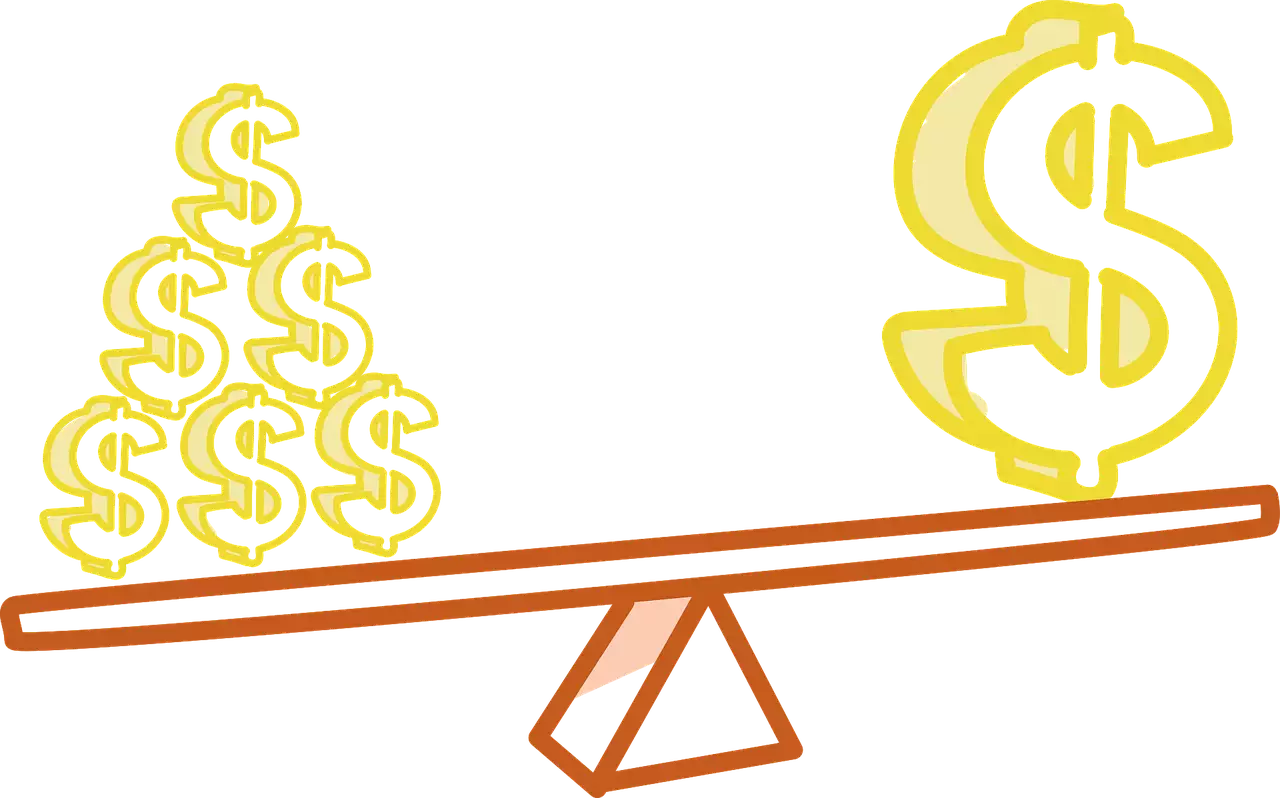Optimal Price Calculator
The Art of Optimal Pricing
Table of Contents
- Key Concepts: Understanding the Foundations
- Marginal Costs: The Incremental Approach
- Price Elasticity of Demand: Measuring Market Sensitivity
- The Interplay Influencing Profit Margins
- The Optimal Price Calculator: A Tool for Precision Pricing
- Description of Inputs
- Marginal Costs: The Foundation of Pricing
- Initial Price and Demand: Establishing the Baseline
- Final Price and Demand: Gauging Market Reaction
- Calculating the Optimal Price
- The Economic Interplay at Work
- Understanding the Results
- Optimal Price: Finding the Profit Maximizing Point
- Optimal Quantity: Estimating the Sales Sweet Spot
- Profit Analysis: The Comparative Advantage
- Using the Calculator to Make Informed Decisions
- Benefits of Using the Optimal Price Calculator
- Enhanced Decision-Making Efficiency
- Improved Profitability Through Data-Driven Strategies
- Limitations and Considerations
- Summary
- Related Calculators

Setting the right price is akin to finding a hidden treasure—it can lead to a bounty of profits when done correctly. This is the essence of optimal pricing: the strategic balancing act between what it costs to produce a product and the market's willingness to pay for it. Optimal pricing isn't just about covering costs or undercutting competitors; it's about pinpointing the exact price that maximizes a company's profits.
The key to unlocking this treasure lies in the intricate dance between marginal costs and price elasticity of demand—a dance where precision and insight lead to profitability. Marginal costs must be weighed against how customers react to price changes, and finding the equilibrium is vital. It's not just about charging more; it's about understanding the value customers place on your product and pricing accordingly.
Key Concepts: Understanding the Foundations
Marginal Costs: The Incremental Approach
Marginal costs are the additional expenses incurred from producing one more unit of a product. In the world of optimal pricing, these costs are pivotal as they set the baseline for the lowest possible pricing threshold. If the price falls below marginal costs, a company could be selling at a loss; hence, each product's price must cover its marginal cost at the very least.
Price Elasticity of Demand: Measuring Market Sensitivity
Then comes the price elasticity of demand—a measure of how demand for a product fluctuates with its price. If demand drops significantly when prices increase, the product is said to have elastic demand. Conversely, if demand remains relatively stable despite price hikes, the demand is inelastic. This elasticity (or lack thereof) is a critical gauge for understanding how much wiggle room there is for pricing above marginal costs.
The Interplay Influencing Profit Margins
The interplay between marginal costs and price elasticity of demand is where the magic of optimal pricing happens. Set the price too high, and elastic demand may lead to a drop in sales volume, reducing overall profit. Price too low, and you may miss out on potential earnings, especially if the product has inelastic demand. The sweet spot is a price that considers the cost of production and the consumer's response, thereby maximizing the profit margins.
The Optimal Price Calculator: A Tool for Precision Pricing
The Optimal Price Calculator is a sophisticated instrument designed to navigate the complexities of pricing strategies, empowering businesses with the foresight to set prices that are not just competitive but also maximally profitable. The brilliance of this tool lies in its ability to integrate economic principles with real-world data, offering a calculated approach to profit maximization.
The primary purpose of the Optimal Price Calculator is to analyze and synthesize crucial pricing components to recommend the most profitable price point. It accomplishes this by taking into account the intricate relationship between a product's marginal costs and the price elasticity of demand within the market. The functionality of the tool is rooted in advanced economic algorithms that process input data to predict how price adjustments could affect demand and, consequently, profitability.
Description of Inputs
To perform its calculations, the Optimal Price Calculator requires specific input data:
- Marginal Costs: The cost of producing one additional unit of a product.
- Initial Price and Demand: The starting price point and the corresponding demand level for the product.
- Final Price and Demand: A revised price point and the resulting demand level post-change.
These inputs are essential for the tool to analyze the pricing environment and forecast the optimal price.
Marginal Costs: The Foundation of Pricing
Marginal costs play a critical role in pricing decisions as they represent the absolute floor for setting prices. By understanding the marginal costs, companies ensure they do not price their products below the cost of production, which would result in a loss with each sale.
Initial Price and Demand: Establishing the Baseline
The initial price and demand inputs set the baseline from which the calculator can measure the impact of price changes. This initial data point helps establish a starting reference for the analysis, indicating how the market is currently responding to the product's price.
Final Price and Demand: Gauging Market Reaction
The final price and demand inputs reflect the market's reaction to a price change. This information is pivotal as it reveals the price elasticity of demand for the product and indicates whether the demand is sensitive or insensitive to price changes.
Calculating the Optimal Price
- Input the marginal costs, initial price and demand, and final price and demand into the calculator.
- The calculator assesses the price elasticity of demand based on the changes between the initial and final inputs.
- It then calculates the projected demand at various price points, taking into account the marginal costs and the elasticity.
- By analyzing these projections, the calculator identifies the price point at which profit is maximized—this is the optimal price.
The Economic Interplay at Work
The calculator's core algorithm lies in understanding how the price elasticity of demand interacts with marginal costs. A product with elastic demand requires a careful approach to pricing above marginal costs, as consumers may be quick to reduce purchases if the price is too high. Conversely, a product with inelastic demand allows for greater flexibility in pricing above marginal costs without significantly affecting sales volume.
Understanding the Results

Once the Optimal Price Calculator has churned through the data, it outputs several key metrics that businesses use to inform their pricing strategies.
Optimal Price: Finding the Profit Maximizing Point
The calculator pinpoints the optimal price by considering the highest possible profit margin that can be achieved while taking into account the price elasticity of demand and marginal costs. This price is not necessarily the highest price but is the price at which the expected increase in sales volume, or the retention of sales at a higher price point, will lead to the greatest profit.
Optimal Quantity: Estimating the Sales Sweet Spot
In addition to determining the optimal price, the calculator estimates the optimal quantity — the number of units expected to sell at this price point. This figure is essential for ensuring that supply aligns with market demand at the new price level.
Profit Analysis: The Comparative Advantage
The calculator provides a comparative profit analysis at three critical price points: initial, final, and optimal. This analysis helps businesses understand the potential profit impact of different pricing strategies, offering a clear picture of the financial outcomes of price adjustments.
Using the Calculator to Make Informed Decisions
Business leaders use the Optimal Price Calculator to simulate various market scenarios, such as entering a new market, launching a new product, or responding to a competitor's pricing strategy. By inputting different cost and demand scenarios, companies can forecast how these changes could affect their profitability.
Real-world case studies highlight the calculator's effectiveness. For instance, a case study might show how a company used the tool to adjust prices in response to a rise in raw material costs, successfully maintaining profit margins without losing market share.
Benefits of Using the Optimal Price Calculator
Enhanced Decision-Making Efficiency
With the calculator, businesses can quickly and efficiently process complex pricing data, which leads to faster decision-making. This rapid response capability is crucial in dynamic markets where conditions change frequently.
Improved Profitability Through Data-Driven Strategies
The calculator's data-driven approach allows businesses to move beyond guesswork. By relying on concrete data, companies can fine-tune their pricing strategies to maximize profits and ensure competitive pricing.
Limitations and Considerations
While the Optimal Price Calculator is a powerful tool, it is not without limitations. It operates under the assumption that market conditions remain constant, which is seldom the case. Changes in consumer behavior, competitor actions, and economic shifts can all impact the effectiveness of the suggested optimal price.
External factors such as regulatory changes, supply chain disruptions, or sudden shifts in consumer trends can all affect demand elasticity and cost structures, leading to inaccuracies in the calculator's suggestions. Therefore, while the calculator is an excellent guide, it should be one of several tools used in a comprehensive pricing strategy.
Summary

Setting the right price is both an art and a science. The Optimal Price Calculator emerges as a vital partner in this dance, enabling businesses to perform with grace and confidence. By blending economic theory with practical data, it provides a platform for decision-makers to arrive at pricing strategies that not only cover costs but significantly boost profitability.
This tool's capacity to yield the optimal price and quantity marks a revolution in pricing strategy development, offering a clear path to elevated profit margins. It equips businesses with the foresight to anticipate market reactions and adjust their sails accordingly, ensuring they navigate the competitive seas with data as their compass.
Related Calculators
Businesses looking to expand their analytical toolkit can consider the following related calculators:
- Break-Even Calculator: Determines the point at which total costs and total revenue are equal.
- Marginal Revenue Calculator: Assists in calculating the revenue generated from one additional unit of a product.
Each of these calculators serves a specific purpose and can complement the Optimal Price Calculator, providing a comprehensive suite of tools for robust pricing strategy development.

